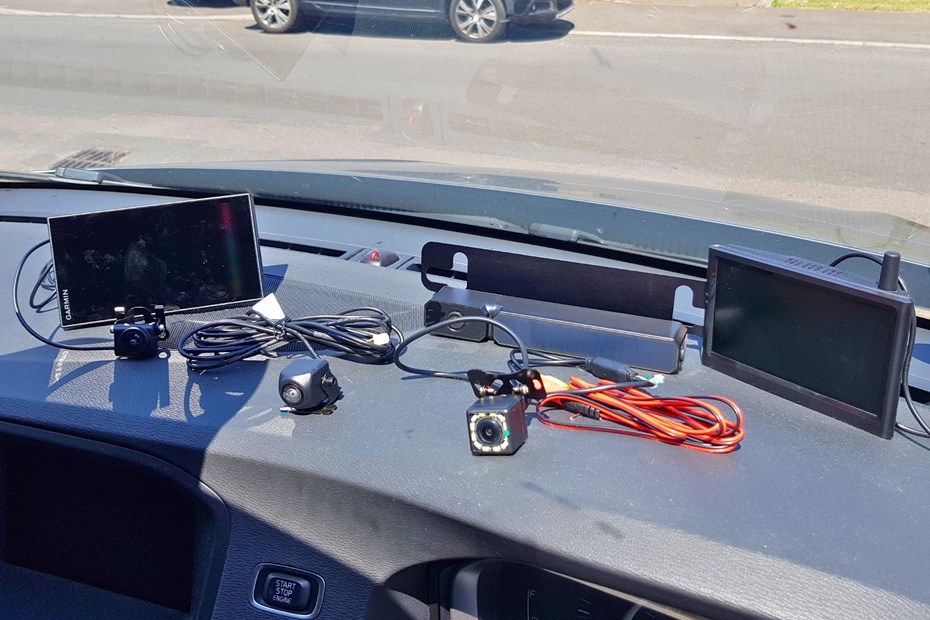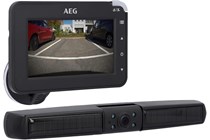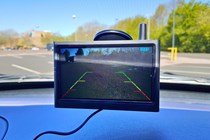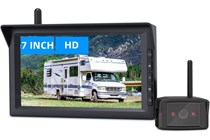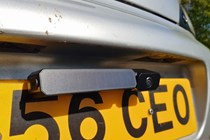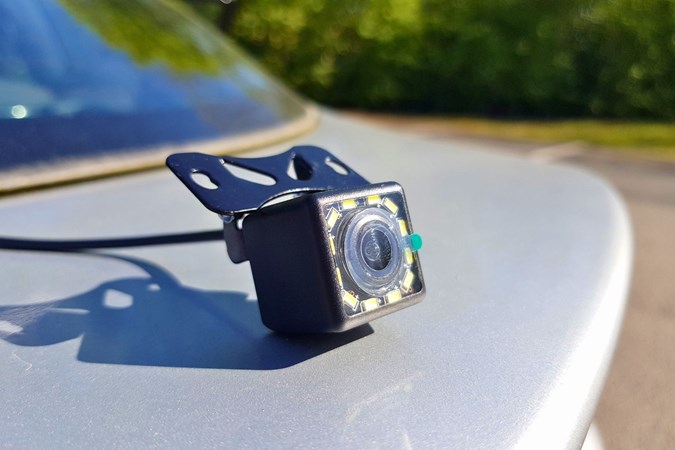You might think that adding aftermarket reversing cameras is a bit odd in terms of car upgrades – certainly in comparison to the more popular dash cam setups. Many cars in the modern era have them fitted, but more often than not, they were optional extras that hadn’t been fitted. A lot of other cars won’t have been offered with them at all. But if you get the right one, they could transform your ability to see behind you.
Lots of modern cars are full of thick pillars and blind spots which can make the purpose of reversing into a parking space difficult. That’s why many new cars nowadays have parking sensors fitted as standard, as well as complying with ever-changing safety legislation. Reversing cameras are an extremely helpful aid to pretty much any car. Even the best at parking will have the odd lapse in judgement, which can spell disaster for bumpers. A reversing camera will make reversing safer and can even improve your parking abilities.
While parking cameras are becoming increasingly common features on cars, they can often be fairly expensive optional extras or fitted to luxurious cars. On the other hand, aftermarket reversing cameras can be installed on any car and will cost a lot less than one from a car manufacturer. If however, they’re not to your tastes, check out our guide on the best dual dash cams.
The best aftermarket reversing cameras 2025 at a glance
With that in mind, it’s worth remembering that a lot of cars simply won’t have parking sensors or reversing cameras fitted. We’ve found the best aftermarket reversing cameras available, all of which will ensure you can see clearly and safely behind you.
How we test:
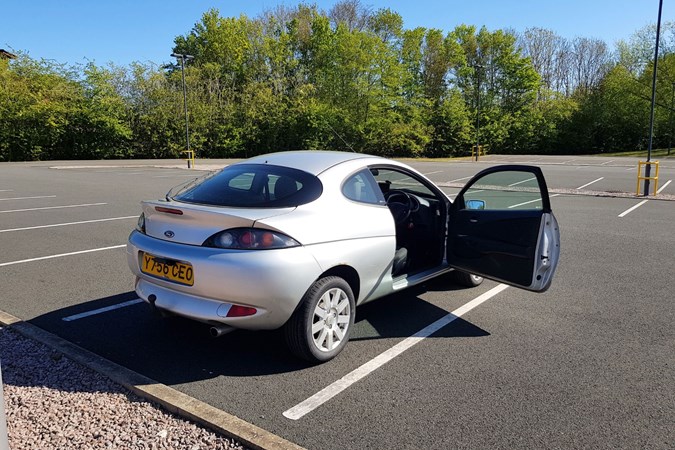
We set up all of our loaned cameras onto the back of a Ford Puma – a vehicle old enough to not have a factory reversing camera installed, so owners of such vehicles may benefit from an aftermarket setup. We played around with mounting points around the back of the vehicle to see where they could sit relative to things like the rear number plate, boot lid, bumper and so on.
With those we fully tested, we backed the Puma into various parking spaces using only the camera. We judged how easy it was to park and how clear the picture is in aiding the driver.
What we look for
We haven’t been able to fully test all the reversing cameras we were loaned, but for the ones we did, we are primarily looking for recording quality. Monitors depend on your individual setup, but some come provided with a compatible monitor, which is what we judged them on for the cameras provided.
Next up is ease of installation: some of the wireless cameras take around five-minutes to set up, whereas hardwired ones will obviously take a while longer. What we’ll keep in mind is that when buying one of these hardwired cameras, installation isn’t included, so you’re expected to source a specialist. We will factor this into our scores, as it creates extra time and expense for the user.
Build quality isn’t our largest concern, but it’s nice to know if you’ve spent a considerable amount of cash, that your camera has a solid feel and can withstand a myriad of different weather conditions. Usually, most of these reversing cameras have IP ratings, signifying their waterproof levels, and that’s the basis we’ll be using for this score.
Value for money is next, and the cost of installation of the cameras will be factored into the score. If it’s a wireless, easy setup, then it’ll likely score a bit higher than a hardwired item. Getting a reversing camera professionally installed will set you back from around £80 up to £200, depending on the fitter and time taken to install. All of the above will eventually be tired into our overall score.
The best aftermarket reversing cameras tested 2025
Tested product
The best aftermarket reversing camera
There wasn't quite enough room for the mount to stick in place on our Ford Puma test car - at least without taking off the number plate and sticking the camera underneath before re-screwing it back on again. This is something you'd have to bear in mind when installing the device, so check where you can mount if on your vehicle first before purchasing.
In order to test the camera itself, I simply wedged the camera mount behind the rear number plate before turning on the monitor. The image immediately shows up, and it goes blank again after a certain amount of time. You can press any button on the monitor and the image reappears. Please note that this test took place in the Parkers HQ car park, and you should never place a camera in such a way that it covers the vehicle number plate.

Nevertheless, I found the camera to be adequate at best in picture quality. It's only a 480P resolution, and this lets it down slightly. The screen isn't great at adapting to sunlight, and the overall image was quite grainy. But still, it was enough to see what was behind me in order to reverse into a bay, and my parking position still ended up relatively straight.
The lines on the monitor don't move - I found this fairly jarring, but it could make sense to some depending on preference. Personally, I wasn't a massive fan and for the price point, the quality and capability of the monitor should be better.
But despite all that, the sheer simplicity, IP69K waterproof protection, and ease of installation of the Auto-Vox setup makes this my winner and I would recommend anyone yearning for rear visibility in their old car to it a go.
Review by Aaron Hussain
Pros
- Amazingly easy to set up - and only takes a few minutes, if lucky
- You get everything including the monitor and mount for the kit
- You can see well enough when reversing into a parking bay
Cons
- Video quality could be better than a mere 480p of resolution
- I found the lack of line movements to be quite jarring
| Screen Size | 5-inches |
| Waterproof rating | IP69K |
| Recording angle | 150-degrees (H) |
| Extras included | Monitor, screen mount |
| Power source | Wireless/solar power |
| Cable length | N/A |
Editor's pick
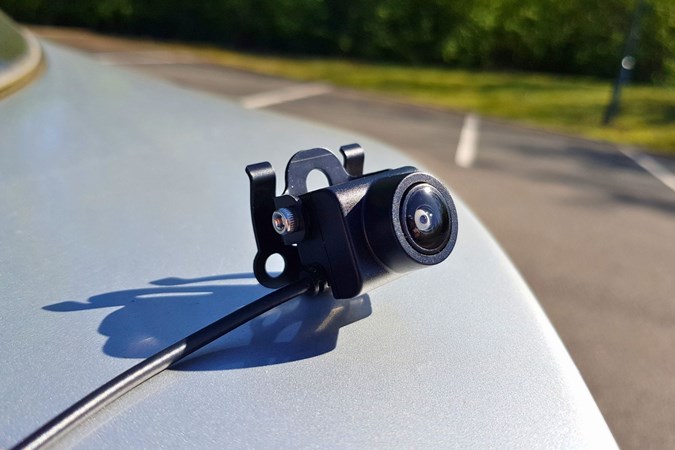

This can quickly rack up the cost. Nevertheless, this camera can provide up to 720p of HD resolution back to the (compatible) sat nav and 160 degrees of viewing angle, giving you great vision of what's behind. There's even a version with night vision, which makes reversing in dark conditions even easier.
One other slightly fiddly thing to bear in mind is that the BC50 comes with a transmitter device along with the wiring loom. You'll need to play around with where you want to fit it within your vehicle while installing. We haven't been able to fully test this product, but our initial impressions are more positive than both the Road Angel and Pioneer.
Once it's all set up, you simply pair up the camera to a compatible sat-nav monitor. With the other two, you're kind-of on your own with what you want your view to be displayed on. This leads me to believe that once we set up a full and proper test, this Garmin will be slightly easier to get up and running.
Review by Aaron Hussain
Pros
- Camera offers up to 720p HD resolution back to the screen
- Compact little unit with just 2.5 x 1.7 x 2.2cm dimensions
- Night vision version available, albeit at a slightly higher cost
Cons
- The longer 15-metre cables are sold separately
- Professional installation recommended, which adds up cost
| Screen size | N/A |
| Waterproof rating | IP67 |
| Recording angle | 160-degrees (H) |
| Extras included | None |
| Power source | Wired |
| Cable length | Up to 15-metres (optional) |
The best monitor for Garmin reversing cameras
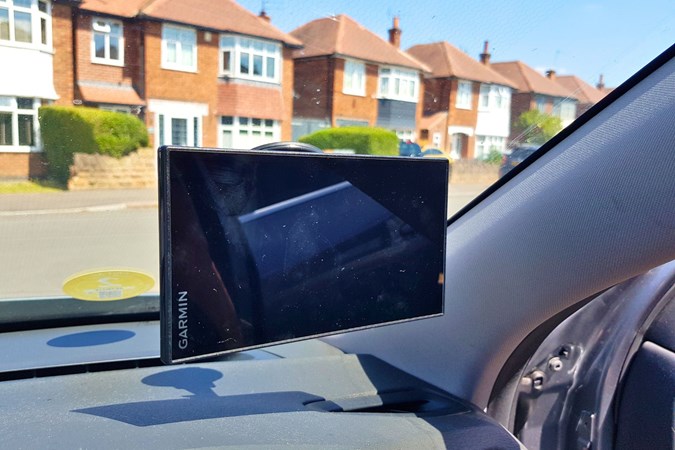

I found it very easy to set up; it simply clicks into the windscreen mount and getting the device up and ready is a very quick process. You can find the menu for the reversing camera easily and it presents you with the option to select the BC50.
As a sat nav itself, it seems to be a fairly obsolete bit of kit when most smartphones have similar functions. But in all honesty, it's a great bit of kit for when you need reliable, concise navigation.
It has a load of features integrated including the ability to pair up your phone and enable hands-free calling. You also get live traffic updates, weather conditions, and even live fuel prices. You even get text notifications, so it's really a small hands-free tablet for your car - not just a sat nav.
I used the DriveSmart 66 to drive my family to Birmingham Airport and back. There's a series of fearsomely complicated roads leading to the drop-off point, and I'm pleased to report the Garmin was a fabulous aid at helping me get there without issues. I found the navigation system more impressive than what you'll see on Google Maps or Waze
Should you splash the cash on a DriveSmart rather than mount your phone to the dashboard? I can't imagine most people will. But as mentioned, this is more than just a sat-nav for your car. It's almost an infotainment screen, too.
Review by Aaron Hussain
Pros
- Has a load more features than just the sat-nav - effectivelymaking it an in-car tablet
- Very easy to set up and took me a matter of three-to-five minutes each time
- Good quality screen with responsive touch and easy-to-navigate menu
Cons
- The costs quickly add up in addition to the BC50 reversing camera, plus installation of it
| Screen size | Six-to-eight inches |
| Waterproof rating | N/A |
| Recording angle | N/A |
| Extras included | Hands-free calling, live traffic updates, Alexa compatibility, fuel price updates |
| Power source | 12V socket |
| Cable length | 1.6m |
Best quality reversing camera
It boasts a 720p recording resolution as well as an IP68 waterproof rating. It also has a 129 degree field of view, and has a night vision sensor to aid the ability to park while it's dark. However, be aware that the camera is the only thing included in the purchase, and you'll need to get a separate monitor and get them both wired properly which can be a hindrance.
The wiring loom itself is rather long, so it'll cover a wide array of different vehicles from small hatchbacks to mid-size SUVs. The main camera is a tad larger than the Pioneer unit, but it doesn't intrude any space or area of the test vehicle we placed it on.
We weren't able to fully test this product at the time of writing, so our overall impressions can't be placed until we do so. Initially however, things look promising for the little Road Angel.
Review by Aaron Hussain
Pros
- Great build quality unit with premium materials
- Very good value at under £60 and comes with a three-year warranty
- Pretty wide angle of view at 129-degrees horizontal and 105-degrees vertical
Cons
- Doesn't come with a monitor, meaning you'll have to provide one yourself
| Screen size | N/A |
| Waterproof rating | IP68 |
| Recording angle | 129-degrees (H), 105-degrees (V) |
| Extras included | None |
| Power source | Wired |
| Cable length | 10-metres |
Best compact aftermarket reversing camera
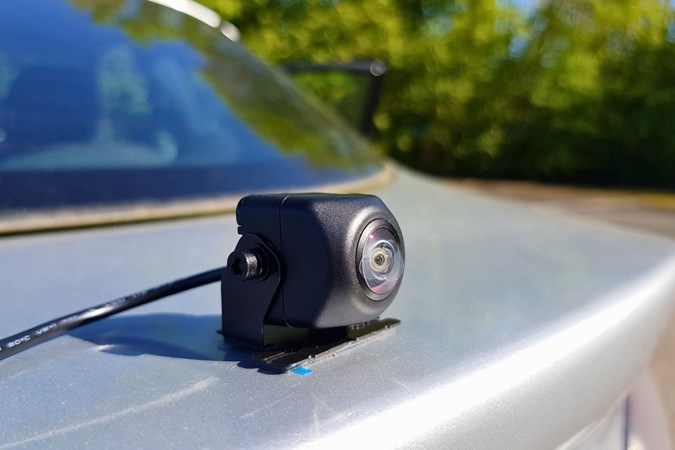

It comes with a ten-metre cable and is compatible with any CVBS setup (code for Colour, Video, Blanking, and Sync). This means it works with a monitor or screen that can provide standard definitions of video. It's also immensely small, measuring in at 2.4 x 2.4 x 2.5cm all round
The wiring loom is rather enormous; you get loads of it which is able to be fed through a vehicle, and the camera itself can easily be fitted above a car's number plate. The kit itself doesn't come with a monitor included, so it's down to you to provide your own or wire it up to the car's infotainment screen.
My initial impressions of the Pioneer are positive. The main unit has a sleek design and looks subtle when fitted onto the back of a vehicle; we haven't been able to fully test it, but once we do, you will be able to find our full report here.
Review by Aaron Hussain
Pros
- Compatible for a wide range of monitors and video screens
- Lighting adjustability for light and dark conditions, and the ability to remove white streaks from direct sunlight
- Good build quality and materials, as per Pioneer products
Cons
- Can be a little tricky to install, which may require exterior modifications
| Screen size | N/A |
| Waterproof rating | IP67 |
| Recording angle | 159-degrees (H) 117-degrees (V) |
| Extras included | None |
| Power source | Wired |
| Cable length | 10-metres |
The best reversing camera for quality
The camera also features a micro-USB camera for additional power if the internal battery gets too low. Also included in the kit is a 4.3-inch TFT screen that can be easily affixed to a car's dashboard with suction cups, again very easy to install.
Pros
- Solid build quality and durable with a IP65 waterproof rating to support
- Easy to install, thanks to solar power for the camera and a 12V socket for the monitor
- Wide enough viewing angle of 110-degrees
Cons
- The solar panels aren't the most capable out there
- The monitor screen is a bit small for some people's likings
| Screen Size | 4.3-inch |
| Protection | IP68 |
| Extras | Solar panel, wireless transmitter |
Best rear view camera for towing
You'll need to connect the camera to the rear lights of your trailer or long vehicle, but the monitor is simply plugged into your in-car socket. As well as a selection of of guidelines and options within the monitor, the camera itself has two infrared lights which helps with night time visibility.
Pros
- Great reversing camera for caravans, campervans, or trailers
- Wide 135-degree angle view makes visibility easy
- IR light makes night vision easier than some others
Cons
- Installation isn't quite as simple as others (Auto-Vox recommend 30-minutes)
| Screen size | 7 inches |
| Protection | IP68 |
| Extras | N/A |
The best reversing camera for Nextbase users
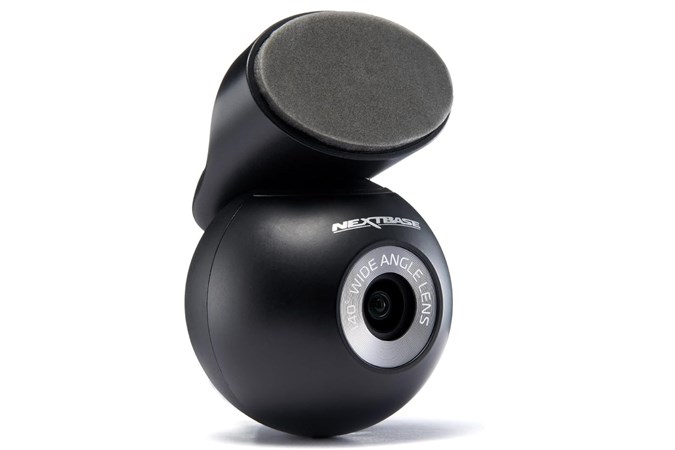

Just remember to place the dash cam somewhere the driver can see the screen. In truth, these camera modules aren't as good as the proper reversing cameras, but they certainly help. Depending on the dash cam you pair it to, you can also get a great recording resolution. For the 322GW for example, it's 720p, but for the 422, 522, and 622GW models, you can get up to 1080p.
Pros
- Doubles as a rear-facing dash cam, which has benefits in itself
- Wide angle lens for better visibility at 140-degrees
- Great video resolution of up to 1080p (if you opt for a higher end dash cam)
Cons
- Requires a Nextbase dash cam for the full effect
| Screen | N/A |
| Protection | N/A |
| Extras | N/A |
How to fit a reversing camera
Fitting a reversing camera depends on the exact kit you purchase. Some camera setups have to be hardwired in and don’t include a lot of equipment, whereas others have monitors and wireless modules to assist you.
With a wired setup, you have to ensure you have the right tools and equipment if you want to try installing it yourself. With a wireless setup, it really is a case of stick-on, plug-in, and go. All you really have to consider with wireless cameras is where you mount them on the back of your vehicle.
With our Ford Puma test vehicle for example – a car without any luxuries such as automatic parking and sensors – placing the mount would prove slightly tricky without covering up the vehicle number plate. So, give your vehicle a good look at where you can fit these things before buying.
FAQs
FAQs
-
Can I install an aftermarket reversing camera on my car?
The current law in the UK states that there is no rule against for reversing cameras or parking sensors to be installed on new cars or to be retrofitted to those without them. So the answer is yes, you can absolutely fit an aftermarket kit to your old vehicle.
However, you must follow the instructions carefully, so you don't damage the electronics within the light cluster itself or while hardwiring the kit into your vehicle. If you're ever hesitant, you can always get a hardwiring professional to fit it for you.
Lastly, when installing such kits, you must never allow them to impede the viewing of your vehicle's number plate. They must always be free of any clutter, so they can be read by traffic and ANPR cameras. So, analyse where you can fit a camera before going ahead with buying one. -
Do I have to wire up a reversing camera?
If the kit you buy requires you to, then yes, you have to wire it up. Usually, there are some wires that can be attached to the wiring of your reversing lights, which will then send a signal to the monitor that you're using. Some setups even have transmitters which will need a source of power within your vehicle for the setup to work properly.
However, setups like the Auto Vox we tested don't have to be wired in. All you need to do is charge up the camera before sticking up the monitor and plugging it into the car's 12V/cigarette lighter. There are a number of setups like it, and these are much easier options for beginners. -
How do you use a reverse camera to park?
You've got to make sure you can view the image of the camera in some way; either to your car's screen or separate monitor will do. After you've established that connection, can you begin to use it as a guide to help you reverse into a parking space.
Back up slowly if you're using the camera for the first time. There's only so much that these kits can help, and you should never try and replace your usual observations by solely looking at the camera monitor. If the camera uses lines, you can use those as a guidance to position your vehicle when manoeuvring it into place. -
Can you use a reversing camera in your driving test?
There appears to be a bit of a contradiction when it comes to aftermarket reversing cameras in driving tests.
In regard to reversing cameras in general - assuming factory-fitted setups - the current ruling states that you can use a car reversing camera on your driving test, but you must not solely rely on it. To pass the test, you'll need to demonstrate full spatial awareness which includes looking at your mirrors, over your shoulder and so on as part of your observations. You can use the camera as part of your guide, but you will fail the test if you solely rely on it.
However, driving examiners won't allow you to bring your own sat nav device to a test. They will always provide a TomTom Start 52 unit, so if you've paired your reversing camera to a sat nav monitor, you may be asked to remove it.
In regard to monitors provided with reversing camera kits, there's a chance you may also be asked to remove it. Before the big day though, check with your instructor and the driving test centre beforehand to avoid any hiccups. -
Are aftermarket reversing cameras a modification?
The best advice is to check with your insurer and declare it if so. A lot of insurance companies class hard-wired dashcams and aftermarket sat navs as modifications, and this theme fits in-line with aftermarket reversing cameras.
Given that you might pair up your aftermarket camera with a sat nav module, you will have to declare this to your insurer once installed as they may factor in the value of it as part of your policy. -
Are aftermarket reversing cameras better than factory-fitted units?
In most cases, the answer is a relative no. In terms of camera type and quality, wired cameras provide a more stable connection, while wireless cameras are easier to install but may have potential signal interference issues. Higher resolution cameras - i.e. 720p - provide clearer images. In the case of the Nextbase rear dash cam, you can get up to 1080p, which is about as clear as rear cameras can get in the aftermarket world.
Modern cars can offer just-as-good, if not better image quality with their reversing cameras. But keep in mind that the newer the car, the better, and a lot of the time, they're an expensive optional extra. Aftermarket units are designed for those who aren't driving in brand new vehicles who want better visibility when reversing. Additionally with older vehicles, aftermarket hands-free Bluetooth kits are available as well. -
Are aftermarket reversing cameras easy to install?
It depends from unit to unit. A lot of aftermarket reversing cameras will be wired into the reversing lights of your vehicle, so tread carefully to make sure you're making thee right connections. If in doubt, seek the help of a professional.
Some of the other hand are more-or-less wireless, and only require you to plug in a monitor into a 12V socket in your vehicle and stick a solar-powered camera on the back of it. How installing said cameras goes depends on the model you choose. -
Are aftermarket reversing cameras worth it?
They're a bit of a niche as far as standard-size vehicles go, and it largely depends on whether you think they'll be a big help when you're reversing into parking spots or turning around in tight spaces. Spatial awareness applies to us all, and there's no shame in wanting a bit of help if your vehicle is hard to see out of.
They're generally more popular with larger vehicles, such as motorhomes, campers, or vehicles that are towing trailers. And if this applies to you, then a reversing camera will be a nice aid if you haven't got one fitted as standard. -
What things should I look out for in an aftermarket reversing camera?
Along with a reputable brand that has a rapport with its market, other things to consider are as follows:
Low-Light Performance: A camera with good low-light capabilities will be more effective in various lighting conditions, especially at night.
Ease of installation: Quite a few reversing cameras have solar panels that replace wires, and this means they're quicker and easier to install than fully wired units. However, most are wired, so it's worth researching how to do it, and if in doubt, seek help from a professional.
Field of View (FOV): Consider the camera's FOV to ensure it covers the area behind your vehicle adequately. Wider FOVs provide better visibility.
Night Vision: Look for a camera with infrared (IR) or night vision capabilities for clear images in low-light or nighttime situations.
Image Reversal: Ensure the camera provides a mirrored or reversed image, so the display matches what you see in your rearview mirror.
Waterproof Rating: Make sure the camera has an appropriate IP rating to withstand weather conditions, especially if it's exposed to rain and moisture. IP68 is generally the best, but many will have IP65 stamps as well. The same story applies to outdoor security cameras.
Parking Lines: Many cameras come with parking guidelines that help you judge distances accurately. Some even have dynamic lines that adjust as you turn the steering wheel. -
How much does it cost to install a reversing camera?
It largely depends on the retailer/business you go with as well as the time it takes to fit it. But prices generally start from around £75 to £80 and can go up to £200. It's a similar process to hardwiring in a dashcam. So, a dashcam installer could probably have a crack at installing a reversing camera, too.
Sign up for the Parkers Newsletter to keep up to date with more of the latest reviews, news, and recommendations from the Parkers team.
Just so you know, we may receive a commission or other compensation from the links on this website - read why you should trust us.


